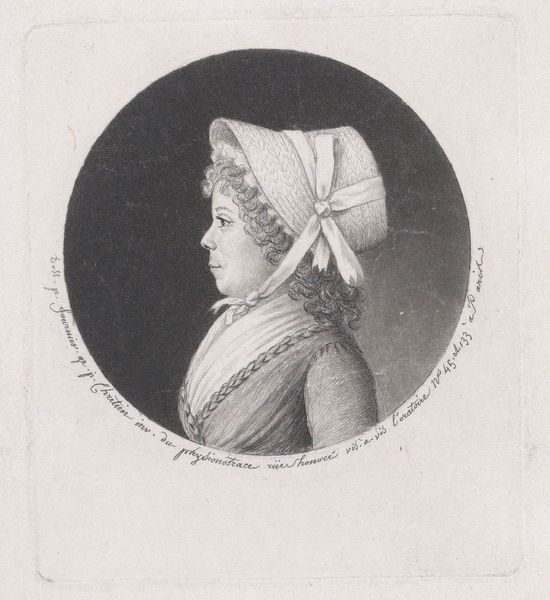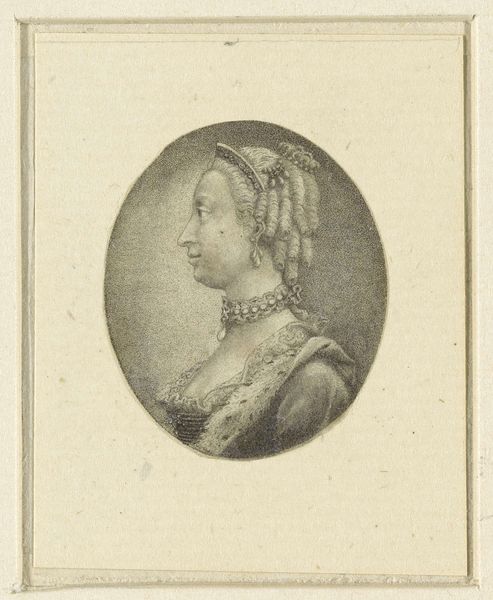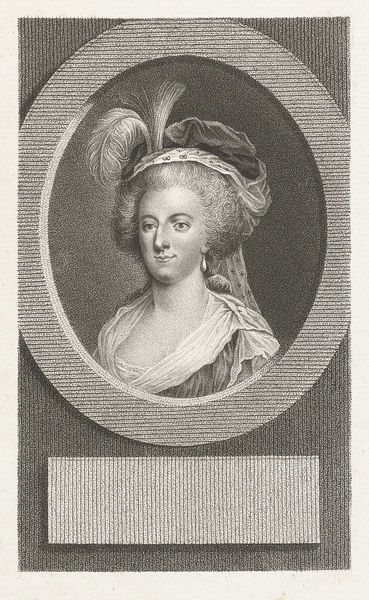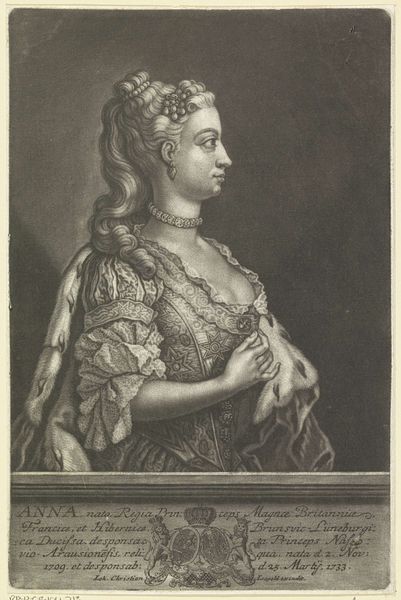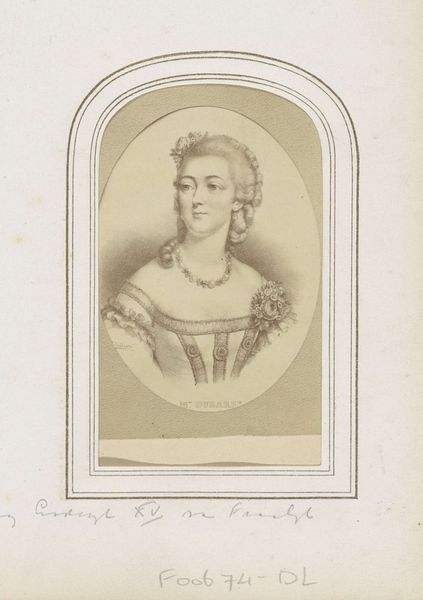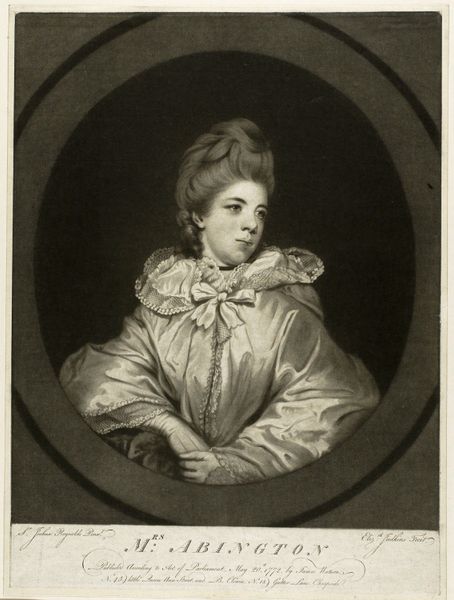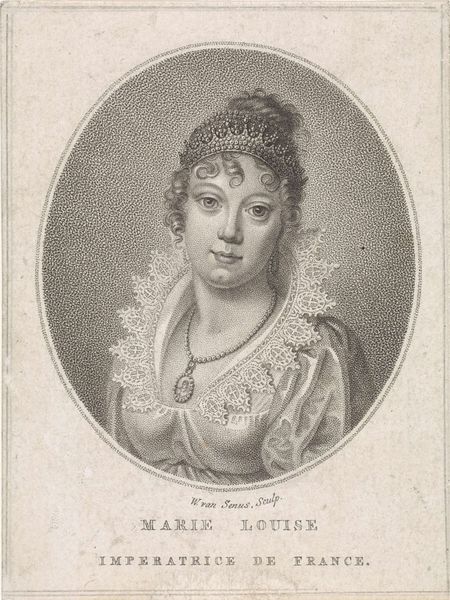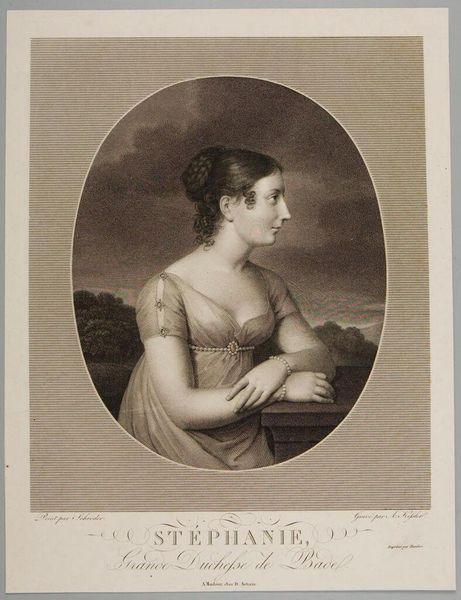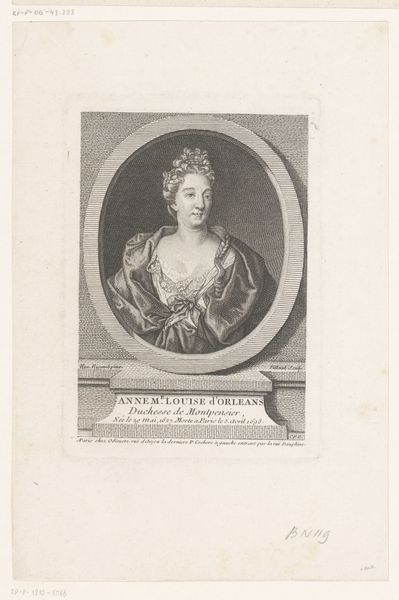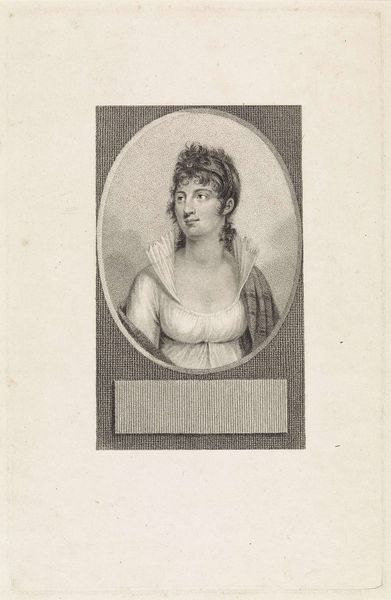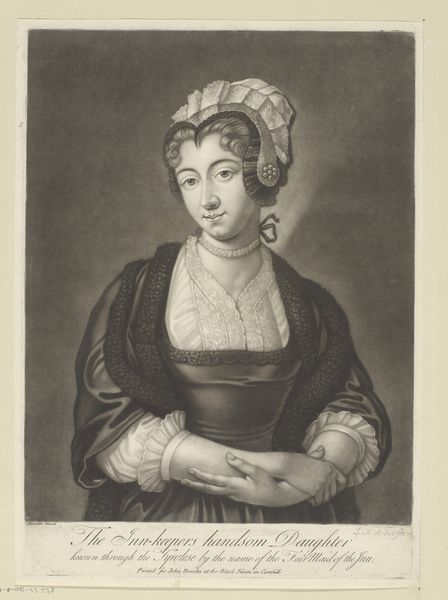
drawing, engraving
#
portrait
#
drawing
#
neoclacissism
#
historical photography
#
19th century
#
academic-art
#
engraving
Dimensions: height 162 mm, width 101 mm
Copyright: Rijks Museum: Open Domain
Editor: Here we have Ludwig Gottlieb Portman's 1803 engraving, "Portret van Alida Maria Pypers (geboren Hollingérus)." It’s striking how formal and composed it is, a very dignified portrait. How would you interpret the presentation of women through portraits during this time? Curator: Well, considering the context, this engraving speaks volumes about the social and cultural role of women in the early 19th century. The Neoclassical style, evident in the clean lines and idealized form, suggests a desire to portray Alida Maria Pypers as a woman of virtue and status. The engraving served to solidify her position within a certain social hierarchy, emphasizing respectability and decorum. What message do you think a piece like this conveyed to the broader public? Editor: I suppose it’s reinforcing existing power structures, maybe even creating aspirational imagery for other women of that era? Curator: Exactly! It is less about capturing a likeness, and more about solidifying social identity. Portraits like these were carefully curated to convey specific messages about the subject and their place within society. Notice how her clothing is simple yet elegant, avoiding ostentatious displays of wealth while still suggesting a certain level of refinement. These subtle cues were essential in shaping public perception and maintaining social order. Do you find the medium itself, engraving, plays a role in this process? Editor: It definitely adds to the formality, doesn’t it? Less immediate, more considered. Like an official document. Curator: Precisely! It suggests permanence, which, in turn, implies the enduring nature of social hierarchies. Considering the political climate of the time, with the rise of Napoleon and the shifting power dynamics in Europe, how might this artwork also be read as a statement of stability? Editor: It’s fascinating to consider how much this small portrait reveals about the values of the era! I learned so much thinking about what was behind this art. Curator: Indeed, the public role of art extended to solidifying a community and shared principles during turbulent periods in history. I am glad you see this portrait in new ways.
Comments
No comments
Be the first to comment and join the conversation on the ultimate creative platform.
